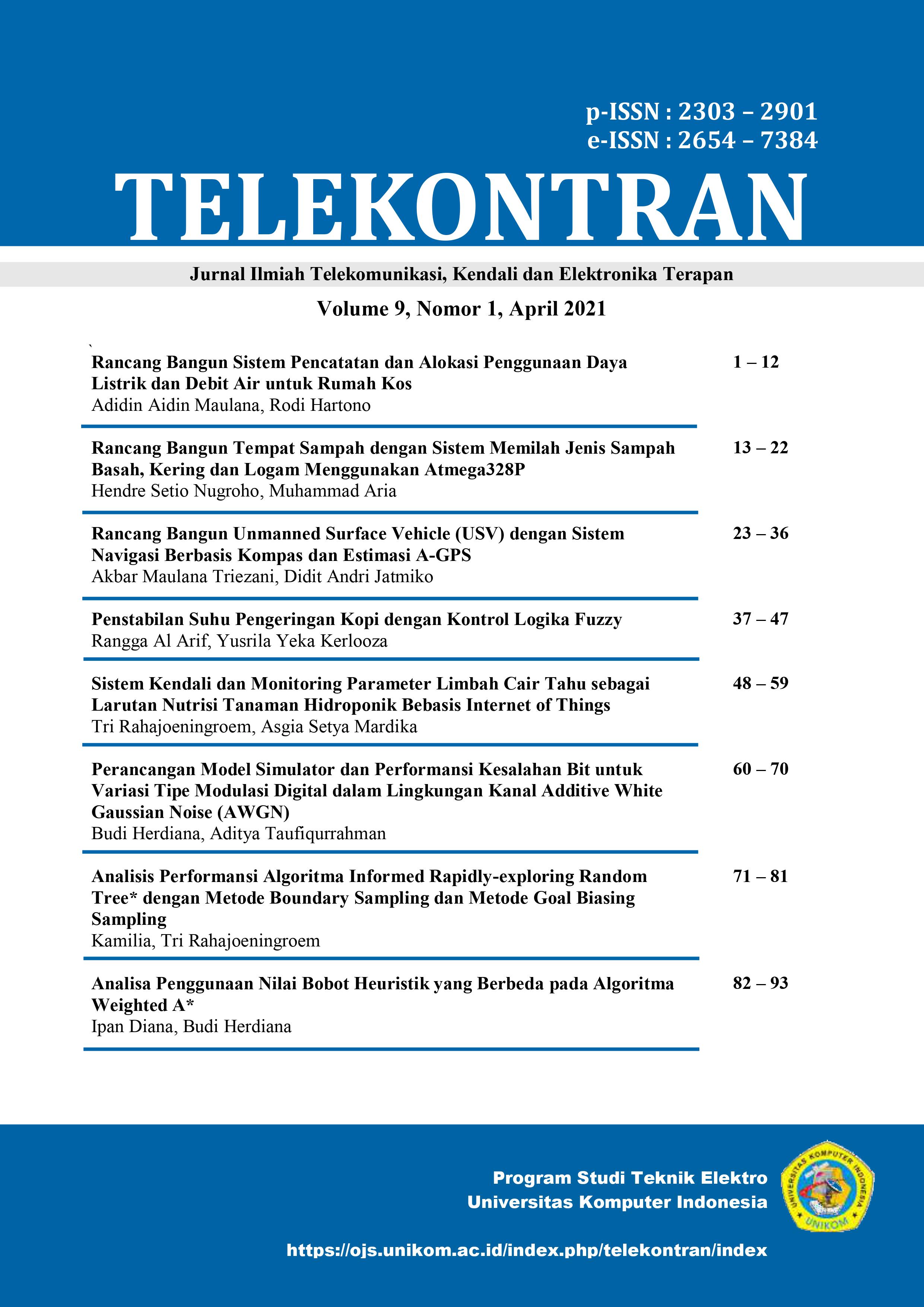Performance Analysis of Informed Rapidly-Exploring Random Tree* Algorithm Using Boundary Sampling Method and Goal Biasing Sampling Method
Main Article Content
Abstract
Path planning is one of the supporting programs for robotics or vehicles. In path planning, the right algorithm is needed in order to get optimal results. Informed Rapidly-exploring Random Tree* (Informed-RRT*) algorithm is an algorithm for path planning based on random sampling in the search space. In this study, an analysis of the performance of the Informed-RRT* algorithm will be carried out using the boundary sampling method and the goal biasing sampling method. The purpose of this study is to compare the Informed-RRT* boundary sampling method with the Informed-RRT* goal biasing sampling method to obtain an algorithm with the best performance in path planning. The test is based on simulation using Labview software. In this test, several cases of existing obstacle environments are used, namely narrow, trap and clutter. The criteria for determining optimal performance are path cost, computation time, and number of nodes. From the results obtained, the average value of the Informed-RRT* boundary sampling method produces faster computation time and also fewer nodes than the Informed-RRT* goal biasing sampling method, while for the distance of the algorithm path with both methods have almost the same result. It can be concluded that the Informed-RRT* boundary sampling method has more optimal performance than the Informed-RRT* goal biasing sampling method.
Keyword : Boundary Sampling, Goal Biasing Sampling, Informed-RRT*, Labview, Path Planning
Downloads
Article Details
Section

This work is licensed under a Creative Commons Attribution-ShareAlike 4.0 International license.
